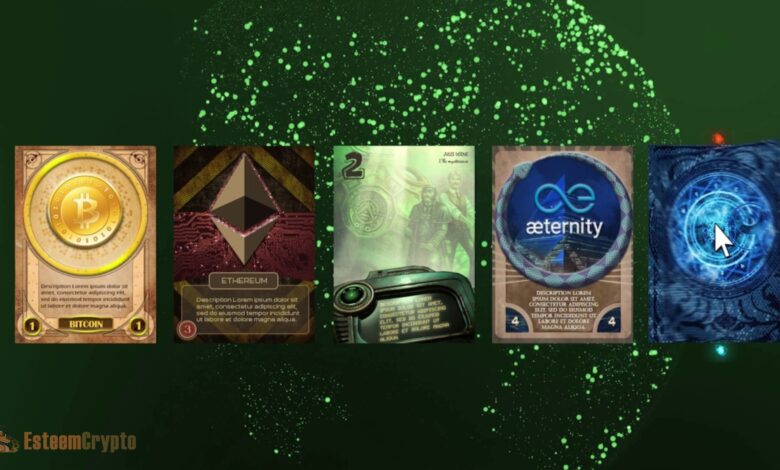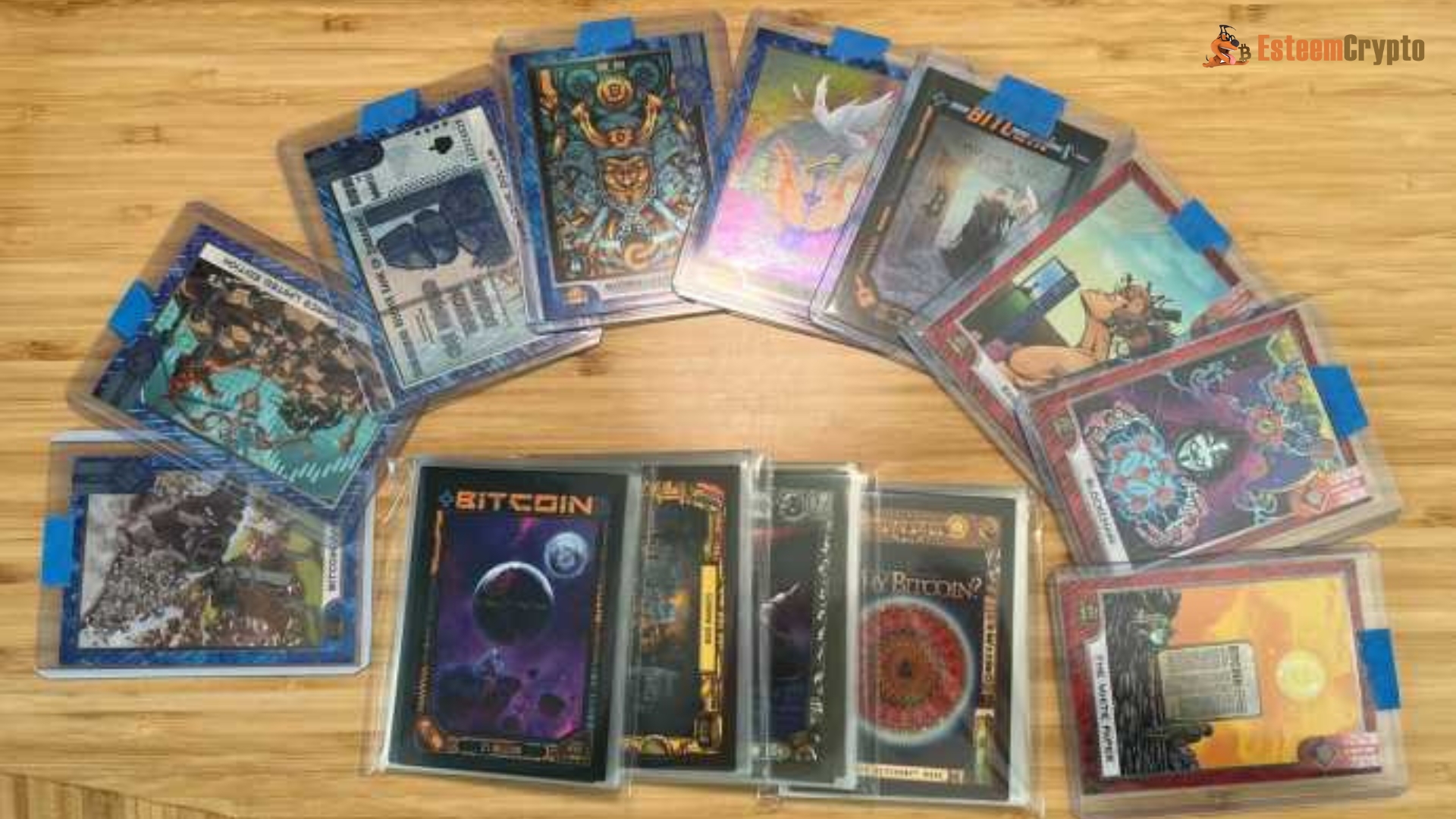Crypto Trading Cards: A New Era of Collectibles

Crypto trading cards are a fascinating new phenomenon in the dynamic realm of blockchain technology; they combine elements of classic collectibles with state-of-the-art digital assets. A thriving market connects physical and digital ownership thanks to these one-of-a-kind digital artifacts, which have piqued the interest of crypto fans and collectors. The combination of art, technology, and finance is driving further growth in the attraction of these cards as we delve further into the digital age. Within the larger framework of the digital collectibles market, this article delves into the ascent, allure, and potential future of crypto trading cards.
The Genesis of Crypto Trading Cards
The concept of trading cards has been around for over a century, with baseball cards being one of the most iconic examples. These physical cards, often featuring players’ statistics and portraits, became a staple in American pop culture, fostering a community of collectors who traded and sold them for profit or pleasure. Introducing blockchain technology and non-fungible tokens (NFTs) has transformed this age-old hobby into a digital phenomenon.
Crypto trading cards are digital assets representing ownership of a specific card on a blockchain. Unlike traditional trading cards, which are prone to damage, loss, or forgery, crypto trading cards are immutable and secure, thanks to the decentralized nature of blockchain technology. Each card is unique, and its authenticity and ownership can be easily verified through the blockchain, making it an ideal solution for collectors.
The first notable wave of crypto trading cards began with projects like CryptoKitties in 2017, where users could buy, sell, and breed digital cats. Although not traditionally traded cards, CryptoKitties demonstrated the potential of NFTs as digital collectibles. This laid the groundwork for more structured and thematic crypto trading cards, which have since expanded into various genres, including sports, fantasy, and pop culture.
Why Crypto Trading Cards Are So Popular
Crypto trading cards have become increasingly popular for several reasons, all of which contribute to the increasing demand for crypto assets.
Scarcity and Uniqueness
One of the primary drivers of value in collectibles is scarcity. Crypto trading cards are often released in limited editions, with each card being uniquely identifiable on the blockchain. This scarcity creates a sense of exclusivity, driving up the value of rare cards and making them highly sought after by collectors.
Provable Ownership and Authenticity
Unlike physical collectibles, which can be forged or tampered with, crypto trading cards offer provable ownership and authenticity. Each card is minted as an NFT on the blockchain, which records all transactions and ownership transfers. This transparency ensures that collectors can trust the authenticity of their cards, reducing the risk of fraud.
Interoperability and Utility
Crypto trading cards are not just static images; many projects integrate them into broader ecosystems, offering interoperability with other platforms. For example, cards from specific collections can be used in blockchain-based games or virtual worlds, adding utility beyond mere ownership. This versatility enhances their appeal, making them more than just collectibles but also functional assets within a digital ecosystem.
Community and Culture
The rise of crypto trading cards has also given birth to vibrant online communities. Platforms like Discord, Twitter, and specialized forums host discussions, trading opportunities, and fan art centred around these digital collectibles. This sense of community fosters a shared culture where collectors can connect, trade, and celebrate their passion for crypto trading cards.
Investment Potential
For many, crypto trading cards represent a new form of investment. These cards can gain a lot of value, particularly for rare or popular objects. Early adopters of specific collections have seen substantial returns on their investments, similar to the gains experienced by early investors in cryptocurrencies like Bitcoin and Ethereum. This potential for financial gain attracts diverse participants, from casual collectors to severe investors.
The Current Landscape of Crypto Trading Cards
As of 2024, the market for crypto trading cards is more diverse and mature than ever. Several platforms have emerged as leaders, each offering unique collections and features.
Sorare
A standout in the world of sports-related crypto trading cards, Sorare allows users to collect and trade digital player cards from various football (soccer) leagues worldwide. Sorare is integrated with fantasy sports, where users can build teams using their cards and compete in weekly tournaments for rewards.
Gods Unchained
This blockchain-based trading card game has garnered a loyal following thanks to its strategic gameplay and high-quality card art. Players can buy, sell, and trade cards on the Ethereum blockchain, each being a unique NFT. The game’s success has shown that crypto trading cards can be more than collectibles—they can also be integral to gaming experiences.
NBA Top Shot
A collaboration between the NBA and Dapper Labs, NBA Top Shot has become a cultural phenomenon. Instead of traditional trading cards, Top Shot offers “Moments”—short video clips of iconic plays from NBA games minted as NFTs. These Moments can be bought, sold, and traded on the Top Shot marketplace, and their popularity has sparked similar projects in other sports and entertainment sectors.
Art and Pop Culture Collections
Beyond sports and games, numerous collections focus on art, music, and pop culture. Projects like Rarible and OpenSea host various crypto trading cards, including original artwork and celebrity collaborations. These platforms have democratized the creation and distribution of digital art, allowing artists to reach global audiences and collectors to discover new talent.
The Future of Crypto Trading Cards
The future of crypto trading cards looks promising, with several trends pointing towards continued growth and innovation.
Mainstream Adoption
As more people become familiar with blockchain technology and NFTs, mainstream adoption of crypto trading cards is likely to increase. This could lead to collaborations with major brands, celebrities, and entertainment franchises, further expanding the market.
Enhanced Interactivity
Future developments may see crypto trading cards becoming more interactive, with features like augmented reality (AR), virtual reality (VR), and AI-driven experiences. This would allow collectors to engage with their cards in new ways, blurring the lines between physical and digital experiences.
Regulation and Security
As the market grows, regulatory scrutiny will likely increase. This might result in forming industry standards and best practices to safeguard collectors and investors against fraud and other dangers. Additionally, advances in blockchain technology could enhance the security and scalability of crypto trading card platforms.
Sustainability
The environmental impact of blockchain technology, particularly concerning energy consumption, is a growing concern. The future of crypto trading cards may involve the adoption of more energy-efficient blockchains or developing eco-friendly practices within the industry.
Conclusion
Crypto trading cards have redefined the concept of collecting in the digital age, offering a blend of scarcity, utility, and community that resonates with a new generation of collectors. As the technology and market evolve, these digital assets are poised to become a permanent fixture in collectibles, bridging the gap between the physical and digital realms in ways we are only beginning to understand. Whether you’re a seasoned collector or a curious newcomer, the world of crypto trading cards offers an exciting and potentially rewarding journey into the future of digital ownership.




